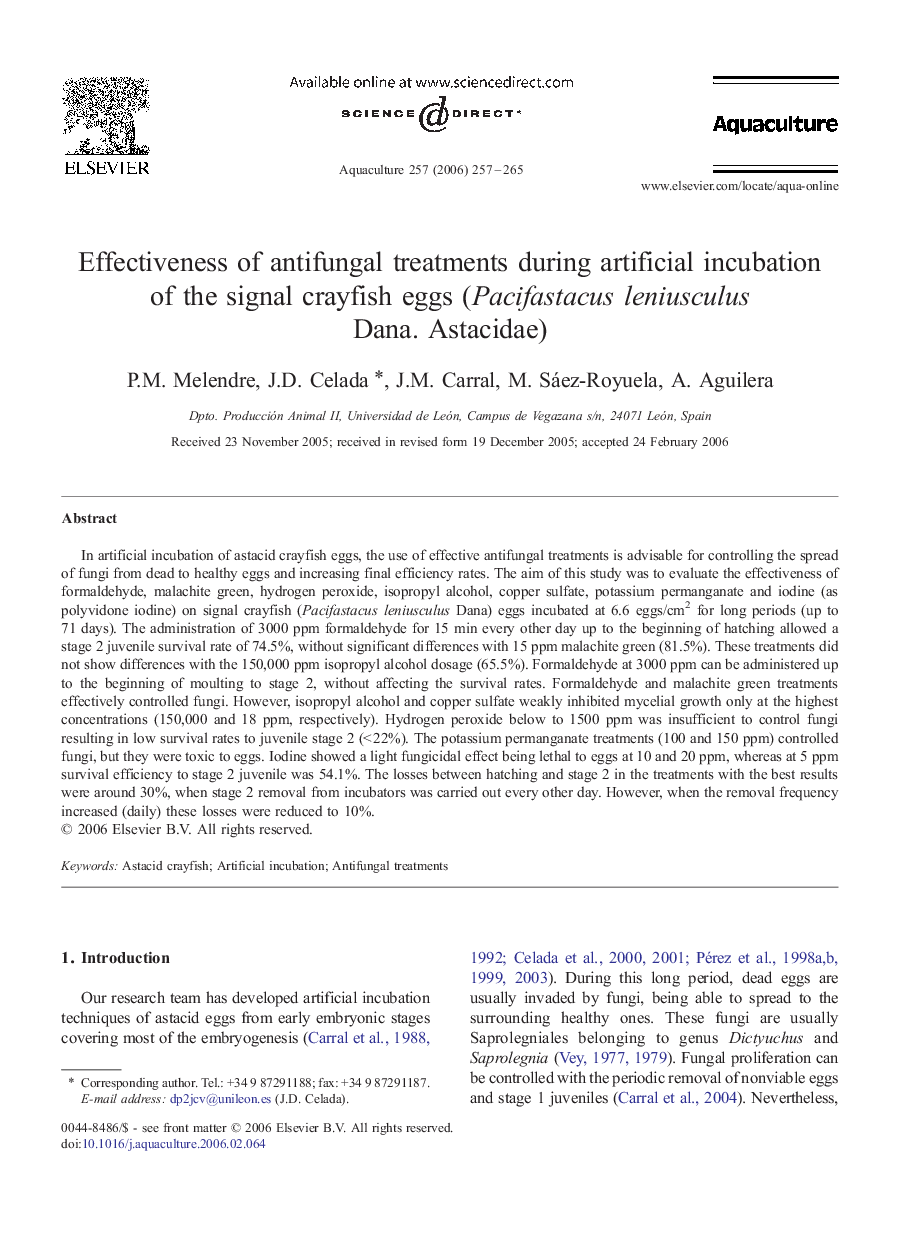| کد مقاله | کد نشریه | سال انتشار | مقاله انگلیسی | نسخه تمام متن |
|---|---|---|---|---|
| 8496801 | 1552984 | 2006 | 9 صفحه PDF | دانلود رایگان |
عنوان انگلیسی مقاله ISI
Effectiveness of antifungal treatments during artificial incubation of the signal crayfish eggs (Pacifastacus leniusculus Dana. Astacidae)
دانلود مقاله + سفارش ترجمه
دانلود مقاله ISI انگلیسی
رایگان برای ایرانیان
موضوعات مرتبط
علوم زیستی و بیوفناوری
علوم کشاورزی و بیولوژیک
علوم آبزیان
پیش نمایش صفحه اول مقاله

چکیده انگلیسی
In artificial incubation of astacid crayfish eggs, the use of effective antifungal treatments is advisable for controlling the spread of fungi from dead to healthy eggs and increasing final efficiency rates. The aim of this study was to evaluate the effectiveness of formaldehyde, malachite green, hydrogen peroxide, isopropyl alcohol, copper sulfate, potassium permanganate and iodine (as polyvidone iodine) on signal crayfish (Pacifastacus leniusculus Dana) eggs incubated at 6.6Â eggs/cm2 for long periods (up to 71Â days). The administration of 3000Â ppm formaldehyde for 15Â min every other day up to the beginning of hatching allowed a stage 2 juvenile survival rate of 74.5%, without significant differences with 15Â ppm malachite green (81.5%). These treatments did not show differences with the 150,000Â ppm isopropyl alcohol dosage (65.5%). Formaldehyde at 3000Â ppm can be administered up to the beginning of moulting to stage 2, without affecting the survival rates. Formaldehyde and malachite green treatments effectively controlled fungi. However, isopropyl alcohol and copper sulfate weakly inhibited mycelial growth only at the highest concentrations (150,000 and 18Â ppm, respectively). Hydrogen peroxide below to 1500Â ppm was insufficient to control fungi resulting in low survival rates to juvenile stage 2 (<Â 22%). The potassium permanganate treatments (100 and 150Â ppm) controlled fungi, but they were toxic to eggs. Iodine showed a light fungicidal effect being lethal to eggs at 10 and 20Â ppm, whereas at 5Â ppm survival efficiency to stage 2 juvenile was 54.1%. The losses between hatching and stage 2 in the treatments with the best results were around 30%, when stage 2 removal from incubators was carried out every other day. However, when the removal frequency increased (daily) these losses were reduced to 10%.
ناشر
Database: Elsevier - ScienceDirect (ساینس دایرکت)
Journal: Aquaculture - Volume 257, Issues 1â4, 30 June 2006, Pages 257-265
Journal: Aquaculture - Volume 257, Issues 1â4, 30 June 2006, Pages 257-265
نویسندگان
P.M. Melendre, J.D. Celada, J.M. Carral, M. Sáez-Royuela, A. Aguilera,